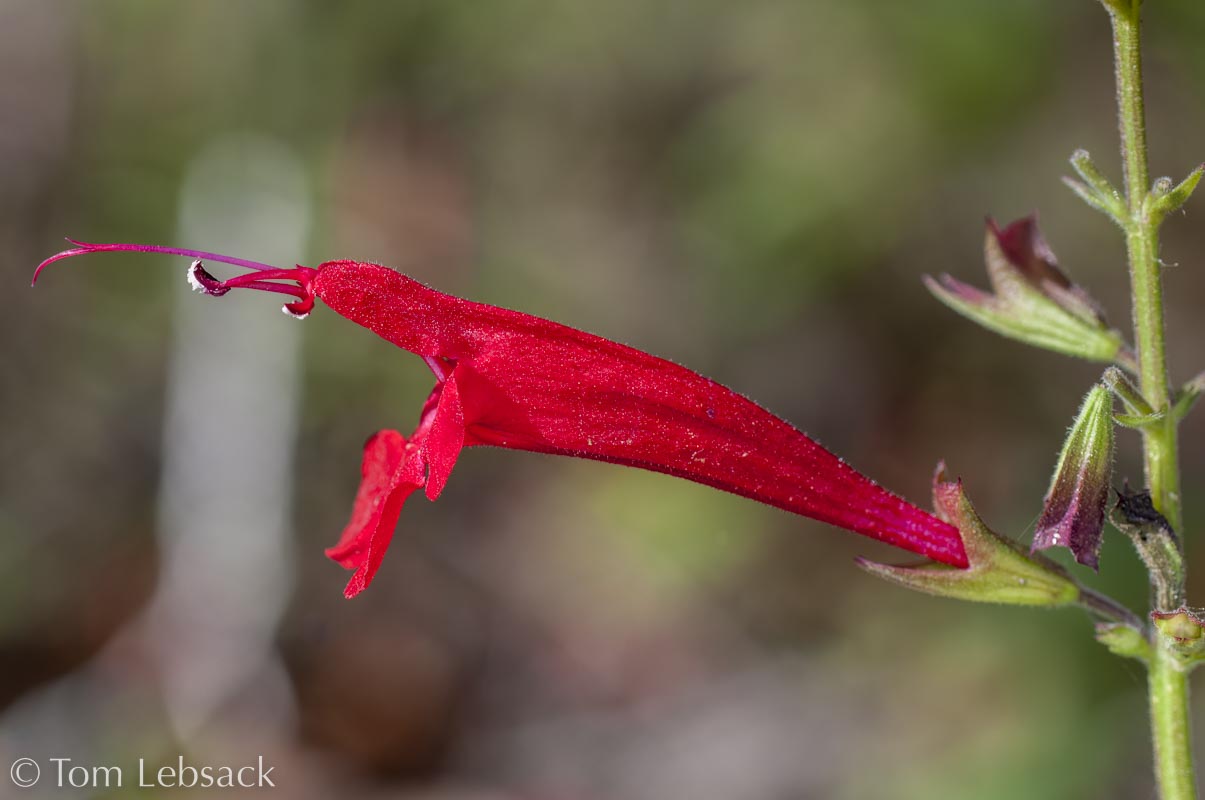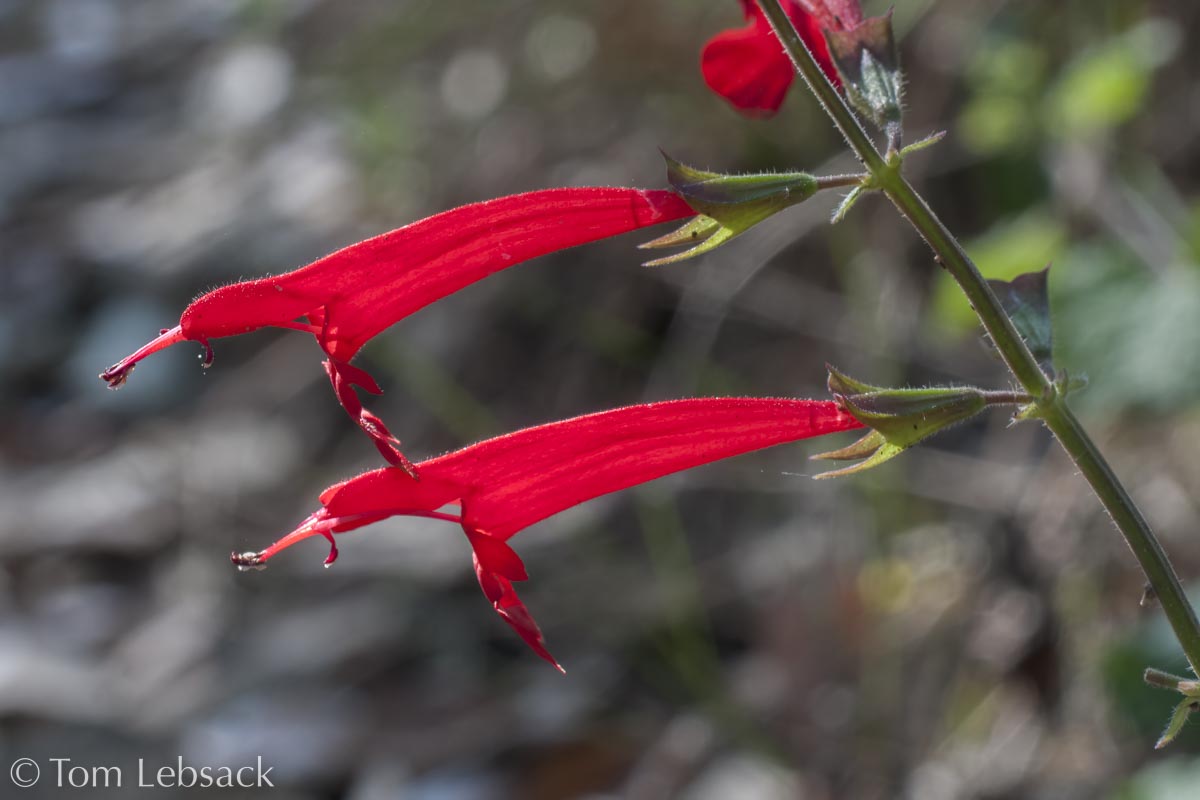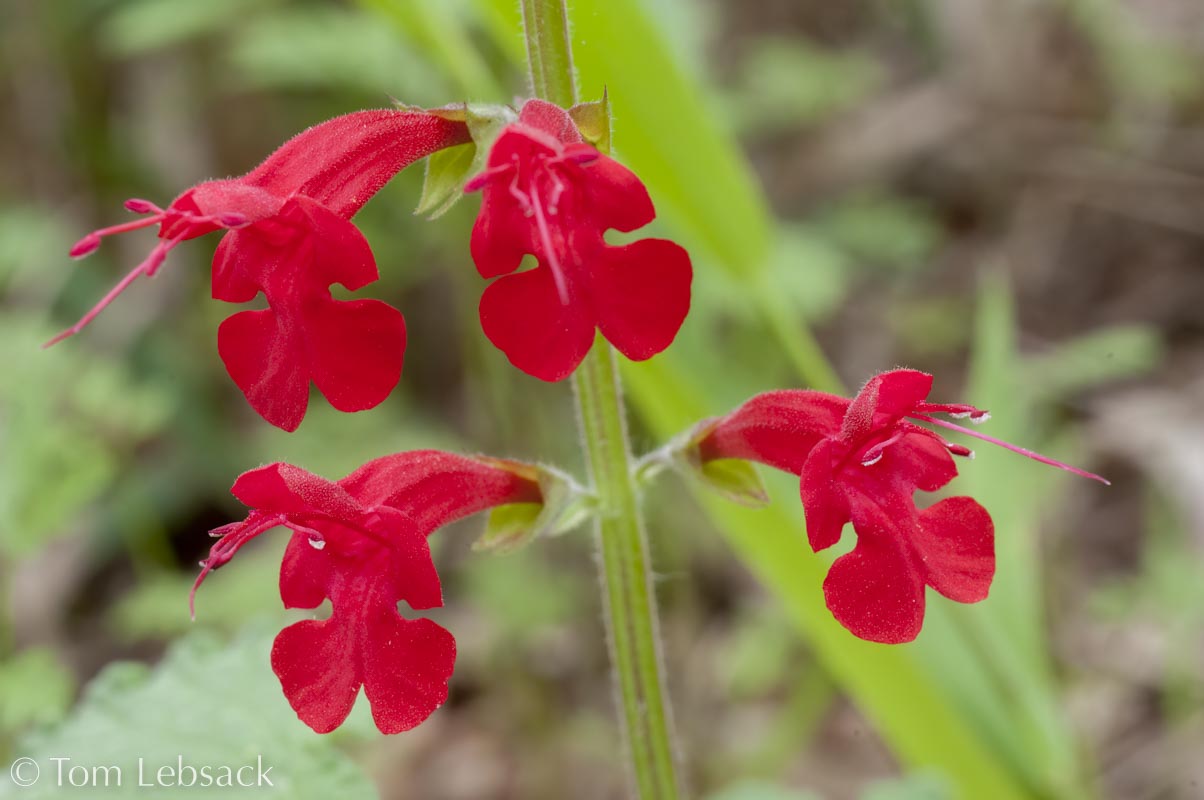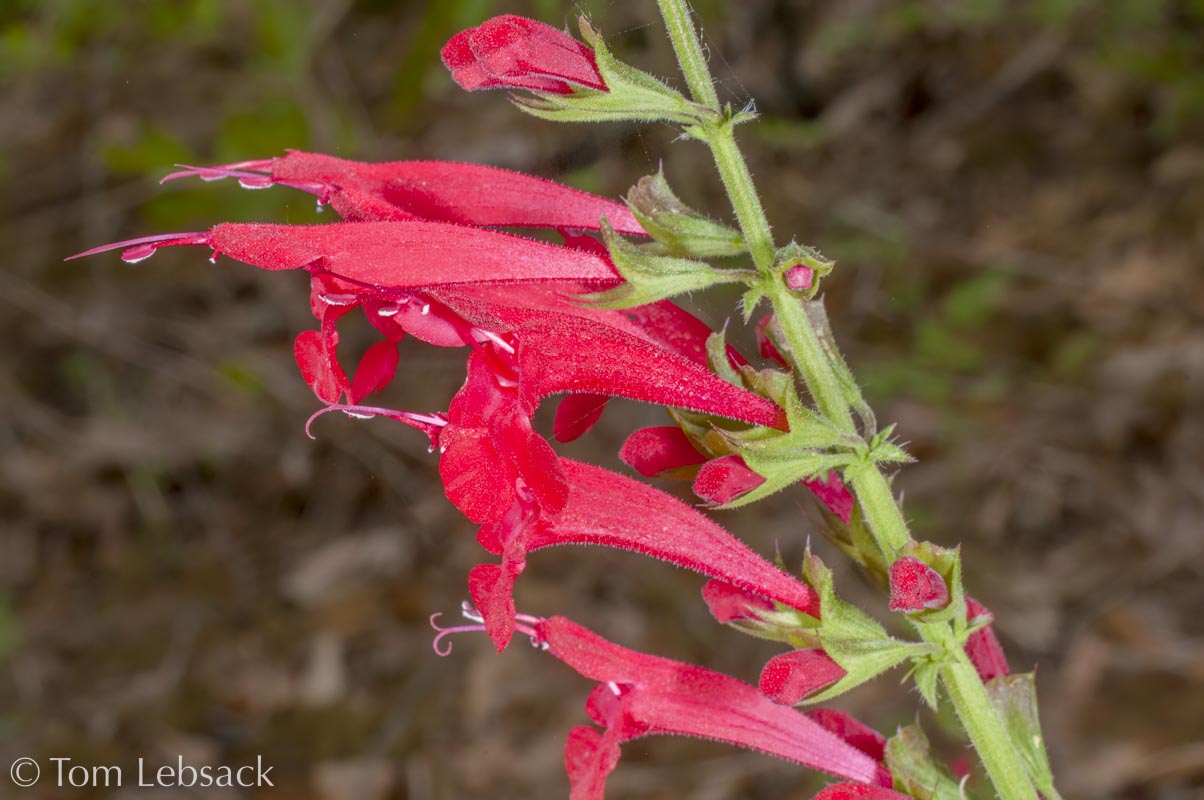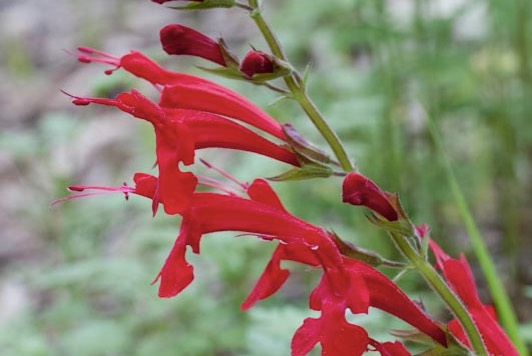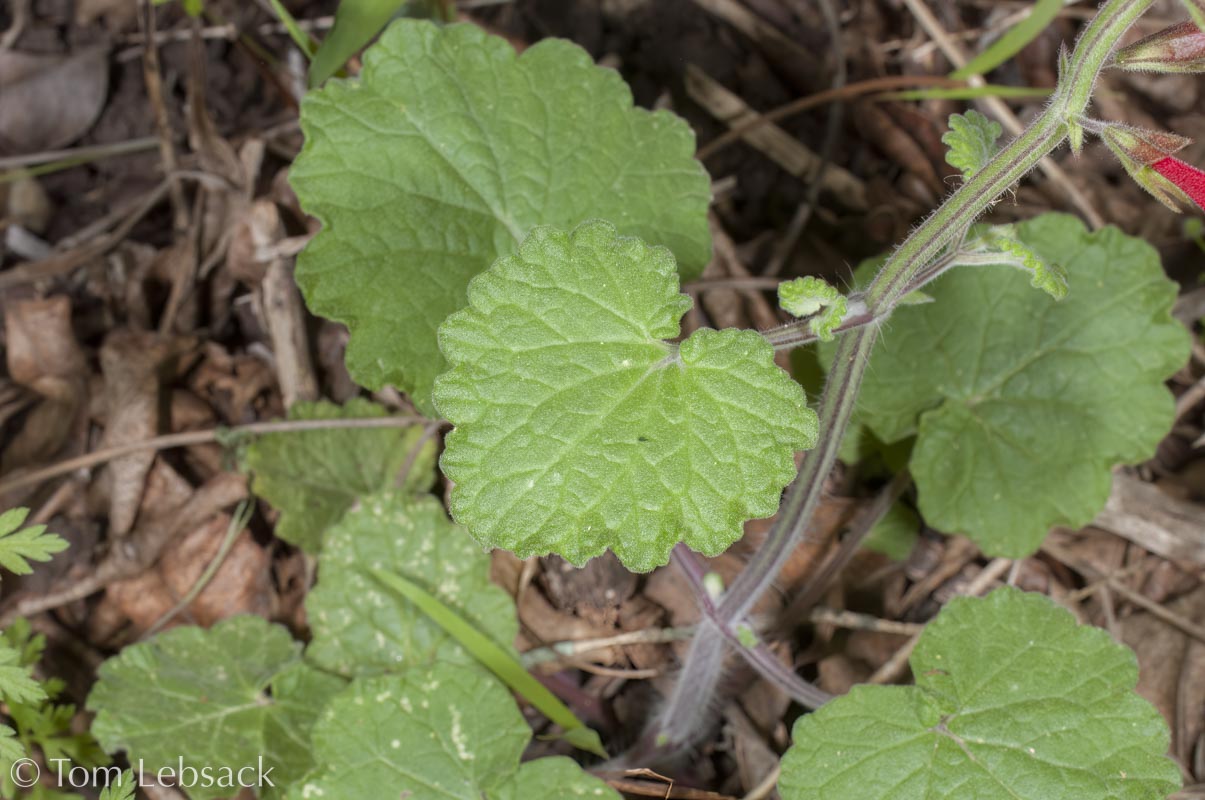Texas Wildbuds
Salvia roemeriana
(Cedar Sage)
| Scientific Name | Salvia roemeriana | USDA PLANTS Symbol | SARO3 |
| Common Name | Cedar Sage | ITIS Taxonomic Serial No. | 504998 |
| Family | Lamiaceae (Mint) | Wildflower Center Ref. | Click Here |
| Description | Habitat: Rocky, wooded areas in Central Texas; often found in the shade of Ashe Juniper (Juniperus ashei) trees. Plant: Erect to reclining multi-stemmed perennial with stems 1 to 2 feet long. Leaves: Upper leaves nearly round or cordate to reniform, 1 to 2 inches across, hairy with scalloped edges on long petioles; lower leaves may be compound with smaller leaflets. Inflorescence: Loose, elongated terminal racemes of bright red 1 to 1-1/4 inch-long flowers with two-lipped corollas; spreading lower lip has deeply cleft lobes; two protruding stamens. Bloom Period: March to August. References: "Manual of the Vascular Plants of Texas" by Correll and Johnston, "Wildflowers of Texas" by Michael Eason and "Wildflowers of the Texas Hill Country" by Marshall Enquist. |
BONAP Distribution Map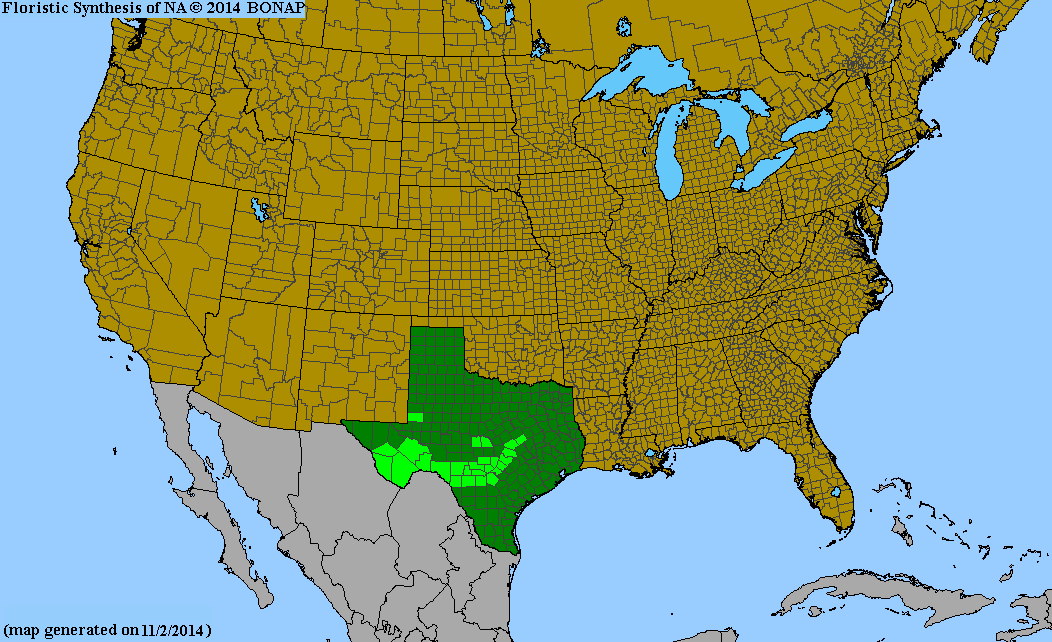 Map Color Key Map Color Key |
Texas Status: Native |
Banner photo of Castilleja indivisa and Lupinus ssp. taken along FM 1323 north of Johnson City, Blanco County
© Tom Lebsack 2025
Every attempt is made to provide accurate, up-to-date, and relevant information, but the completeness or accuracy of any information presented on this website cannot be guaranteed. I use authoritative references to insure high standards of accuracy and review and update the information frequently.
